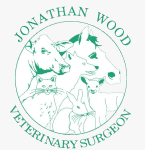Small animal services
Our lovely team provides a range of services to help keep your pet healthy and happy. Scroll down to find out more.
Puppy School
Socialise, train and introduce your puppy to everyday life. Held Tuesdays at 6pm at our Barnstaple Cross branch.
Diagnostics
Our x-ray, echocardiography, endoscopy, bronchoscopy and gastroscopy tools let us image specific areas to help with diagnosis.
Surgeries
Our experienced team offers both routine and more complex surgical procedures at our Barnstaple Cross branch.
Glaucoma monitoring
Our vets can examine the eyes for changes, and can use our tonometer to measure internal eye pressure changes.
Inpatient care
We can deliver carefully controlled doses of medication and a wide range of diagnostic tests onsite.
Feline care
Cats can make the most of separate waiting areas and kennels, drip pumps, pheromones, feline friendly handling and more.
Testing for breeders
We offer progesterone testing and vaginal microscopy services for breeders, and can arrange further external tests if needed.
Blood sampling and analysis
Our range of blood tests include those to detect early signs of kidney disease, pancreatitis, blood lactate levels and diabetes.

